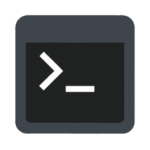Tools for System Administrators
Software
Every Windows shop has been there—chasing down the right MSI, juggling silent-install switches, and still ending up with a half-configured workstation

Honestly, automating Windows chores this way feels like magic—once it’s set up, you almost forget it’s there. Until, of course, something breaks, and you’re thankful you’re not scrambling to hit “Run.” Give it a go, and reclaim those “Oops, I forgot” mornings.

WinAutomation Community Edition turns your repetitive tasks into automated friends. From report runs to web scrapes, it learns your moves and handles the busywork while you focus on the big picture. Give it a try, and reclaim your time.

AOMEI Backupper Standard handles that job without much noise. It’s built for Windows, works well on older setups, and lets you make system images or file-level backups with just a few clicks. It doesn’t require registration. It doesn’t push you into the cloud. And most importantly — it just works.

Cobian Backup isn’t flashy — and that’s what makes it great. If you just need scheduled file-level backups and don’t want to deal with vendor lock-in or complex agents, this tool gets it done. It’s been around for years, still maintained, and still useful in places where a simple, repeatable backup matters more than an all-in-one dashboard.

Areca Backup is the kind of tool you keep on a flash drive. You don’t show it to your boss. You just set it up once, and it works. It won’t hold your hand, but it won’t surprise you either. For technical users who prefer control over convenience, it’s the right kind of boring.

FreeFileSync isn’t just another sync tool—it’s your low-maintenance folder champion. Once it’s set up, you’ll barely notice it running, but boy, will you notice when it saves you from that “I swear that file was here yesterday” panic. Give it a spin and kiss manual syncing goodbye.

Honestly, MailEnable Standard feels like that unsung hero you didn’t know you needed. Free, straightforward, and surprisingly robust—it turns “server setup” from a dread into, well, almost fun. Give it a whirl; your next ticket hunt might just be a breeze.

hMailServer proves that a reliable, enterprise-grade mail server doesn’t have to come with a hefty price tag or a sprawling support contract. With its familiar Windows GUI, scriptable events and rock-solid protocol support, it’s a toolkit that admins can install in minutes and maintain without breaking a sweat—leaving more time for the fun stuff.

Honestly, Piler is one of those tools you set up once and then forget about—until you really need to find that ten-year-old email in two seconds flat. No vendor lock-in, no surprise fees—just a rock-solid, self-serve archive that makes life easier for admins and compliance teams alike.

FreeCommander isn’t about reinvention — it’s about getting control back. For users who handle files all day, it brings structure and speed to what’s usually a clumsy task in standard Explorer. It’s not for everyone, but for power users who want something predictable and fast, it fits right in.

Multi Commander reimagines file management for pros who need speed, flexibility and a single-window powerhouse. Dual panes, tabs, built-in FTP, archives as folders and a plugin playground—all wrapped in a lightweight, free package. Ditch the limitations of Explorer and discover how fast your file chores can really fly.

Honestly, once you’ve lived in FileVoyager’s world of tabs, panes and instant previews, going back to plain old Explorer feels… well, ancient. Give it a spin—your file chores will thank you.
Cyberduck doesn’t try to be clever — and that’s exactly why it works. It opens a connection, shows a remote folder, and lets people move files around without needing to write a line of config. SFTP, FTP, S3, WebDAV — all handled through a simple, familiar interface that feels like using a local file manager.

There are days when you don’t want a dashboard. You don’t want logs stored in S3. You just want to know what your service is doing right now. LogFusion is made for those moments. Open the file, see the data move, follow the flow. When something breaks, it’s often the first place that gives you a clue.

Prometheus and the WMI Exporter feel like a cheat code for Windows monitoring. A couple of installs, a few YAML tweaks, and you’ve got live metrics, sharp alerts and dashboards that tell real stories—without expensive agents. Your servers and on-call nights will thank you.

Loki doesn’t try to replace the heavy hitters. But if you just want to pull in logs, filter them fast, and show them next to your metrics — it gets the job done. Especially for teams that already rely on Grafana, it’s one of those “why didn’t we do this earlier” tools.

NetCrunch Tools isn’t flashy, and it’s not meant to be. It’s what happens when someone builds a network toolkit for real-world use — not as a product demo. When something feels off and you’re not sure what’s broken yet, this is the collection that helps you narrow it down. Fast, quiet, and helpful — and it doesn’t get in your way.

Advanced IP Scanner won’t replace your monitoring system. But that’s not the point. It’s the tool you launch when someone says “I can’t see this machine” and you need to check in five seconds or less. Simple, stable, and fast — the kind of utility that stays on your USB drive long after you’ve forgotten how it got there.

LANState Free isn’t trying to be a NOC platform. It’s a desk-side tool — something to launch when the picture in your head doesn’t match the reality on the cable. It’s not perfect, not scalable, but sometimes it’s the only thing that helps explain what’s going wrong — not in logs, but in shapes and links and blinking green dots.

Angry IP Scanner is not a heavy-duty tool — but that’s exactly why it stays useful. It’s small, fast, and predictable. It shows what’s up, what’s open, and what’s worth a second look. For sysadmins and support techs who live in mixed networks and jump between machines all day, it saves time. And sometimes, that’s all that’s needed.
NoMachine isn’t for everyone — and it’s not trying to be. It solves a specific class of problems where remote graphical sessions need to be fast, functional, and complete. When everything else chokes or feels like a workaround, this is the one that usually works. Not minimal, not invisible — but very effective when it counts.

TightVNC isn’t modern, pretty, or flashy — and that’s exactly the point. It’s a fallback tool, a quiet utility that keeps working when newer ones stop. In situations where RDP is blocked, clients are locked down, or the network is just too slow for anything heavier — this is what gets used. A rectangle on the screen, a working mouse and keyboard, and nothing else to explain.

Terminals isn’t elegant. It looks like something from 2011 because it is. But it runs stable, keeps things tidy, and saves time every single day. It won’t replace a full remote access suite. It doesn’t try to. What it does is reduce the chaos just enough to get through the shift without throwing the laptop.

Immunet Antivirus proves you don’t need a heavyweight champion to keep malware in check. With its cloud-driven smarts, minuscule system demands and friendly dashboard, it’s the perfect sidekick for anyone fed up with bloated security suites. Install it, and watch your PC stay nimble—and safe—without you ever noticing it’s there.

You’ve locked down ports, patched everything, and installed antivirus — but something still doesn’t feel right. That’s where GlassWire Free comes in. It won’t block attacks, but it will show you what’s actually using the network: which app, when, where, and how much.

OSArmor doesn’t try to replace antivirus — it hardens what’s already there. It’s not flashy, but it stops a surprising number of tricks that make it past AV. If you’re running critical systems on Windows and want to cut down on living-off-the-land exploitation and scripting nonsense, it’s worth deploying — quietly, in the background, doing its job.

Maltrail doesn’t try to replace Suricata, Snort, or Zeek. It lives beside them — or in places where those tools would be overkill. It sees what’s happening, compares it to a known-bad list (plus a bit of logic), and leaves a trail behind. For quiet networks, lab setups, or minimal edge defense, it does the job without asking much in return.

Hyper-V delivers enterprise-grade virtualization natively within Windows. With features like live migration, checkpoints and PowerShell automation, it offers a scalable, reliable platform for dev/test labs or production clusters. Spend less time wrestling configurations and more time innovating—Hyper-V has you covered.
VMware Workstation Player delivers a powerful yet straightforward desktop virtualization experience. Ideal for network engineers, developers, or anyone needing isolated environments, Player combines free licensing, robust performance, and user-friendly tools. Spin up, snap, test, and tear down—then get back to real work.

If you’re over licensing nightmares and siloed hypervisors, QEMU for Windows hands you a Swiss-Army-knife of virtualization—totally free, endlessly configurable, and surprisingly performant once you flip on KVM support. Clone your lab, break it, roll back, rinse and repeat… until you’ve built exactly the environment you need. Virtualization, now in your own hands.

There are times when a full hypervisor stack is overkill. For quick test environments, throwaway lab setups, or legacy system emulation, VirtualBox still proves useful. It’s not modern in the cloud-native sense, and it doesn’t pretend to be. But it runs reliably on most desktops, doesn’t ask for a license, and gets out of the way.




